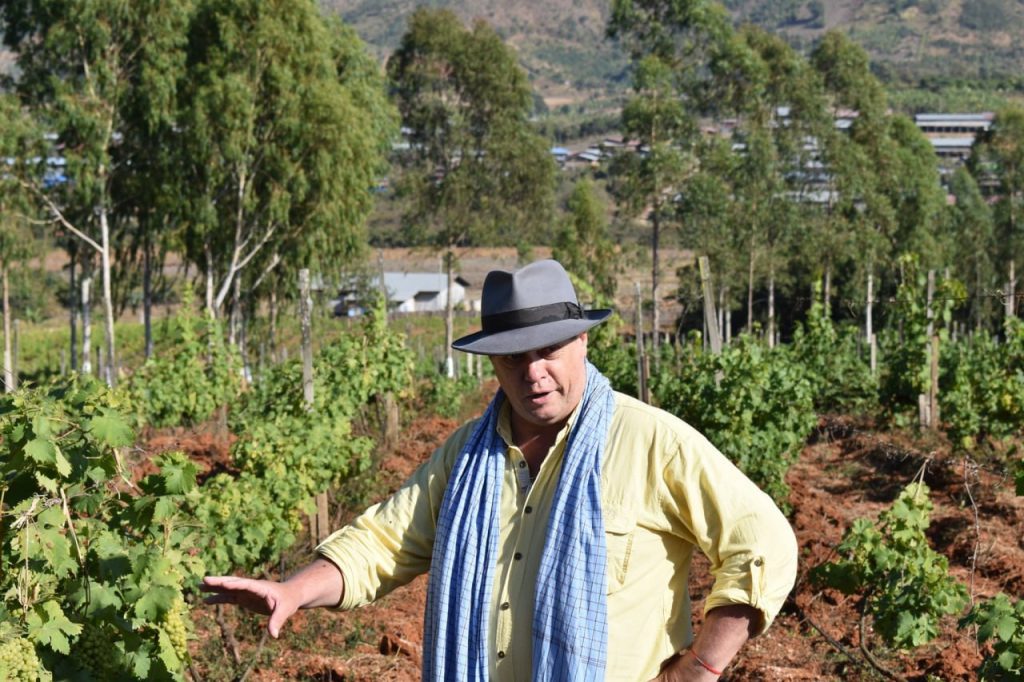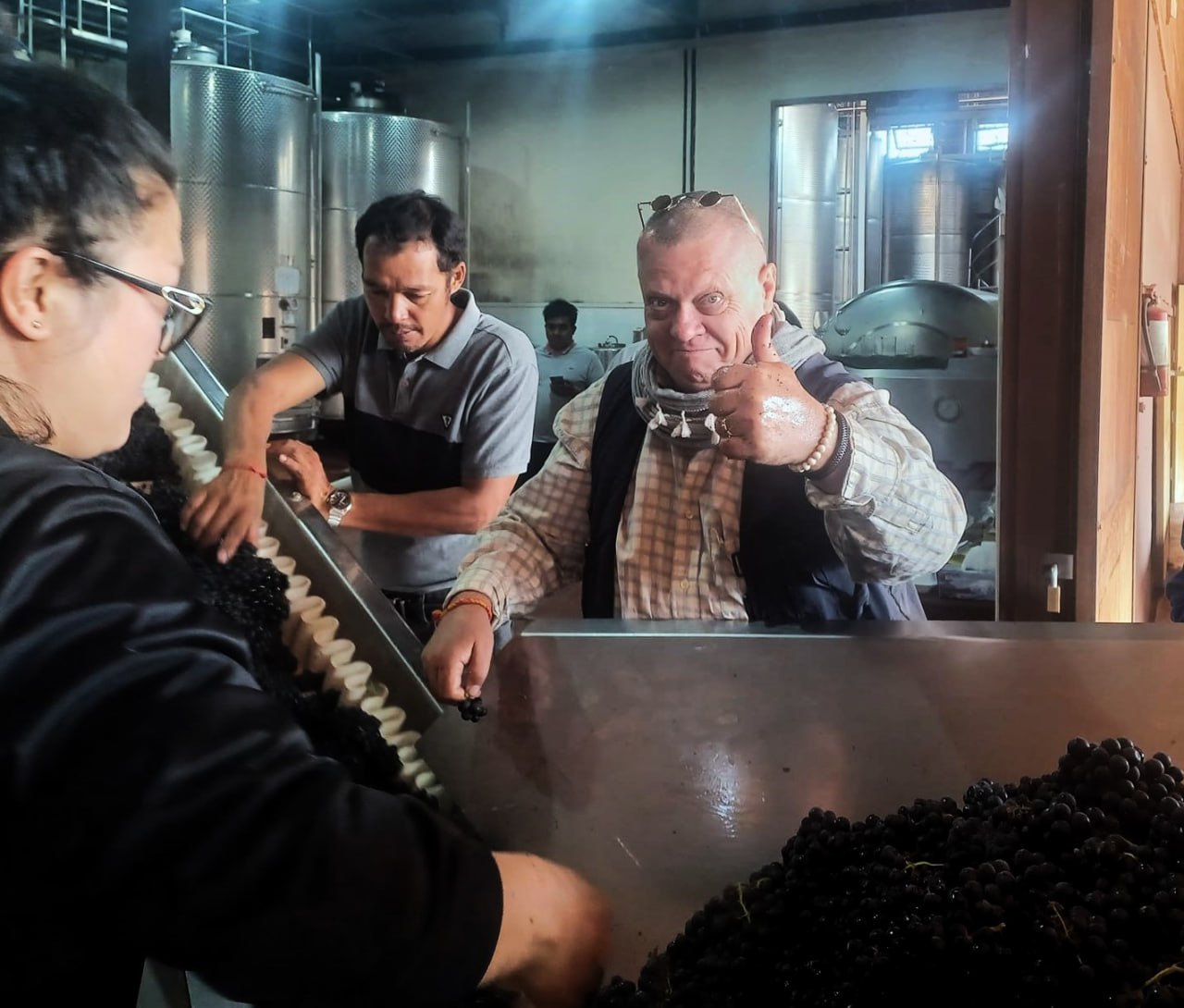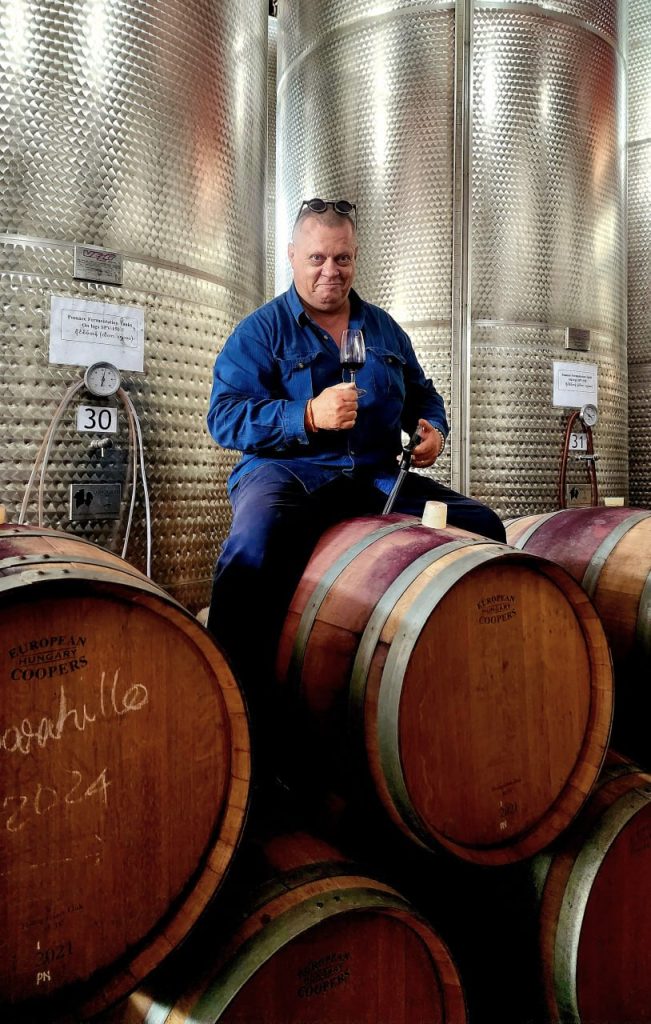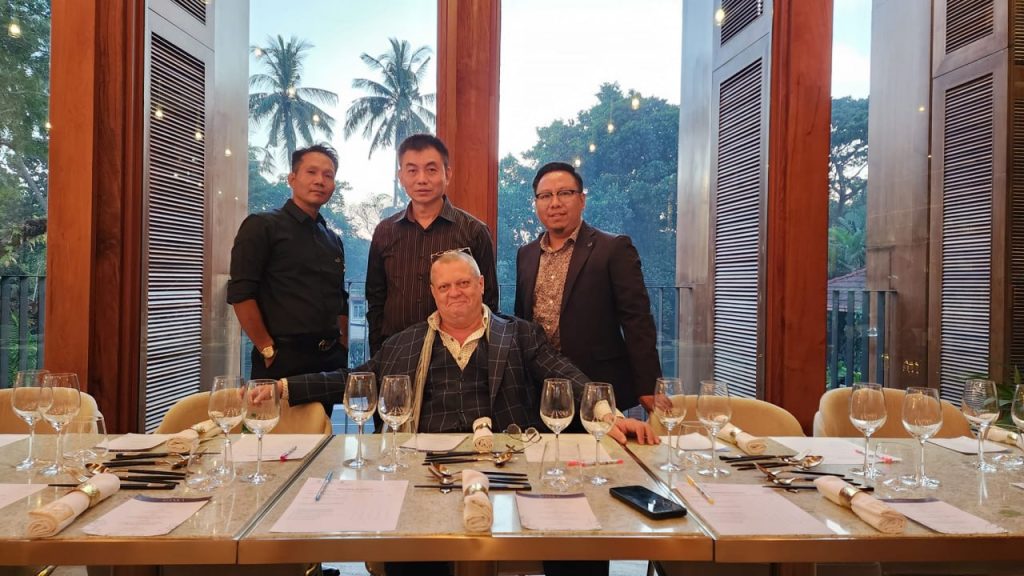Cambodia Leadership Review
As Cambodia’s wine scene continues its transformation from niche curiosity to cultural mainstay, few voices have guided the journey with as much insight and passion as Darren Gall, Creative Director of Vindochine. With decades of experience across Southeast Asia, Daren has played a pivotal role in shaping how wine is understood, appreciated, and integrated into Cambodia’s evolving hospitality and lifestyle sectors.
Darren reflects on the country’s maturing wine culture, shifting consumer tastes, and the importance of storytelling, education, and accessibility in building a sustainable future for wine in the Kingdom.
Leading Cambodia’s Wine Conversation
CLR: As Creative Director of Vindochine and a long-time voice in Southeast Asia’s wine scene, how do you see your role in shaping Cambodia’s emerging wine culture? What does leadership in such a young but rapidly evolving industry look like today?
I have always said that as a wine critic, buyer, seller and as a person who endorses or recommends wines to people, it is definitely not about telling people specifically what wines they should be drinking based on what I like.
It is about understanding what they enjoy or prefer in a wine and sharing with them those wines I feel will best fit their pleasure receptors and looking at wines that are best in terms of quality to price ratio within their brief.
Wines can be good to exceptional at any price point, from most countries and regions, from most varieties and in most styles, as long as they are made from high-quality wine-grapes with hygienic and technically proficient winemaking.

Trends in the Glass: Understanding Cambodia’s Wine Drinkers
CLR: What are some of the most notable trends you’re seeing among Cambodian wine consumers—from varietal preferences to how and where wine is enjoyed? Are local tastes maturing, and how are importers adapting?
Cambodia has had a long-term love affair with Bordeaux reds, from the powerful, full-bodied reds of the Left Bank to the more seductive and approachable medium-bodied reds of the Right Bank. However, of late, there are signs of the national palate moving towards lighter, more elegant styles such as Burgundies and more fruit-forward wines from the New World, such as Argentina, Australia, Chile and more.
For many people entering the world of fine wine consumption, especially with one’s peer group, it is about drinking the right wines and being seen to be drinking the right wines, labels, brands. However, as we mature, become more secure in our wine purchases, and our palates evolve, we prefer wines that fit our lifestyle, our diet and are most pleasing to us.

Perception vs. Reality: Pricing, Value & Accessibility
CLR: Wine is often perceived as a luxury product in Cambodia. What are the biggest misconceptions about wine pricing and value in this market, and how can the industry improve accessibility without compromising quality?
Good question. As previously mentioned, wines can be good at any price point, and the best of them over-deliver on quality for the price. There are different wines for different moments, occasions, and times. You might own a blazing red Ferrari, but you wouldn’t take it to an off-road bash with your buddies or use it to drive your mother-in-law to temple.
Some wines are luxury products; some wines are everyday consumer goods. For many of us, we enjoy a glass of wine with a meal each day, it enhances the dining experience, aids digestion, and stimulates conversation. However, for most of us, these daily occasions are usually not the time to open the vinous equivalent of a bottled Ferrari! Most often, we are looking for well-made wines, from quality grapes, that we can feel comfortable drinking with our meal, without giving our bank manager heartburn.
Some wines are indeed luxury goods, usually made in tiny quantities, with the strictest and most rigorous management in the vineyard, producing tiny crops. These wines are given the most expensive, handmade treatment in the winery, the most expensive oak to mature in, and often come in expensive packaging. This is wine as high art, and to the discerning palate, the prices they fetch are as worthy as that of a magnificent artwork.
We digest art through our senses, paintings with our eyes, music with our ears, fine food and wine with our sense of smell and sense of taste. To me, the finest wines are as worthy of high price and high praise as a painting by Matisse or a composition by Mahler. In terms of accessibility, the most common reason people will buy wine for the first time is that they tried it somewhere, an event, a dinner with friends, a wedding etc.
This is why the industry spends so much time and money on creating experiences for people to be introduced to their wines, such as tastings, exhibitions, master classes, dinners, soirees, and all manner of creative events to bring wine drinkers and their wine brands to each other.
For the service industry, it is about developing knowledge and imbuing them with the confidence to engage with consumers, discuss with them what they are looking for from a wine and making recommendations. Aside from having actually tried the wine somewhere, high up on the list of reasons for purchasing a wine for the first time is recommendation from a trusted source, be that a friend, a wine critic, a sommelier, or the rep in the wine shop. For those that become that trusted source, customer loyalty and repeat business is the reward.

The Future of Wine Production in Cambodia
CLR: While Cambodia imports most of its wine, is there any serious outlook for local or regional production? What would it take—climatically, technically, and commercially—for Cambodia to be on the map as a winemaking destination?
In my nearly twenty years here, I have been asked to look at two potential vineyard sites, one was not suitable (poor soil), whilst the other showed genuine potential, but ultimately the costs were prohibitive. It is not just about planting a vineyard; you must also build a winery. There is a small local producer in Battambang (Banan Winery). It caters to tourists and has been around for many years. The wines are very earthy and rustic, and they are not really going to grow much beyond what they offer now.
Wineries tie up a lot of money, they tend to be asset rich but cash poor, with enormous costs in land, equipment, production, and stock holdings. There is a very famous saying in the industry that the only way to make a small fortune from wine is to start out with a big one. However, all jokes aside, it is an immensely rewarding industry for those who manage to do it well and add real value to what is essentially a primary product. To produce wine cheaply, you need to make and sell a very large amount of it. To make a small amount of wine and sell it for a very high price, you need to be very, very good at all aspects of the industry, or have deep enough pockets to employ people who are.
In countries this close to the equator, you need altitude, so that the nights get very cold and the cold air runs down the slopes and into the valleys. This stretches out the diurnal rhythm and slows down the ripening period. You also need suitable soil, dry weather during the ripening season, access to water, and minimal disease and pestilence pressure.

Cultural Relevance and the Next Generation
CLR: Beyond retail and fine dining, how can wine become a more integrated part of Cambodia’s broader food, hospitality, and lifestyle ecosystem? What role do storytelling, education, and pairing experiences play in growing the market sustainably?
Great stories sell wines, is a mantra I have always taught students of wine, and anyone who knows me will tell you I love to tell wine stories and don’t shut up once you get me going! Our sense of smell is the only sense we have that plus straight into our memory (within the limbic system of our brains, which also governs how we feel about things), all of our other senses take a more circular route through the neo-cortex.
We have an enormous capacity to remember smells, and they are all wrapped up in our own personal histories, our own experiences, and emotions. These ‘Proustian Moments’ where in hearing the stories, and smelling and ingesting the wine, we unlock our own memories and the emotional attachments we have to them.
Like watching the animated movie Ratatouille and seeing the fierce and much-feared food critic Anton Ego taste a humble, Provencal dish of stewed vegetables and be transported straight back to his mother’s kitchen as a child, or talk to a Cambodian about the magic of a mother who could make an amazing meal with only rice and prahok because she knew how to fill it with love.
For wine to become a part of the everyday lives of Cambodians, to fit into their lifestyle it must be shared, talked about and enjoyed with food, families and friends, to make the food taste even better, to bring people together, to stimulate stories, promote a sense of occasion and create special moments and fond memories wrapped around it in our minds and in our hearts. I also see the Cambodian Sommeliers Association as having a leading role in developing education, offering attractive career paths for young people in the hospitality industry, and sharing their knowledge and the many pleasures of responsible wine consumption with people in Cambodia. CLR
Download your free copy of the Cambodia Leadership Review Top 30 F&B and Hospitality 2025 here: https://cambodiainvestmentreview.com/wp-content/uploads/2025/06/CLR-Top-30-FB-and-Hospitality-2025-Magazine-1.pdf





